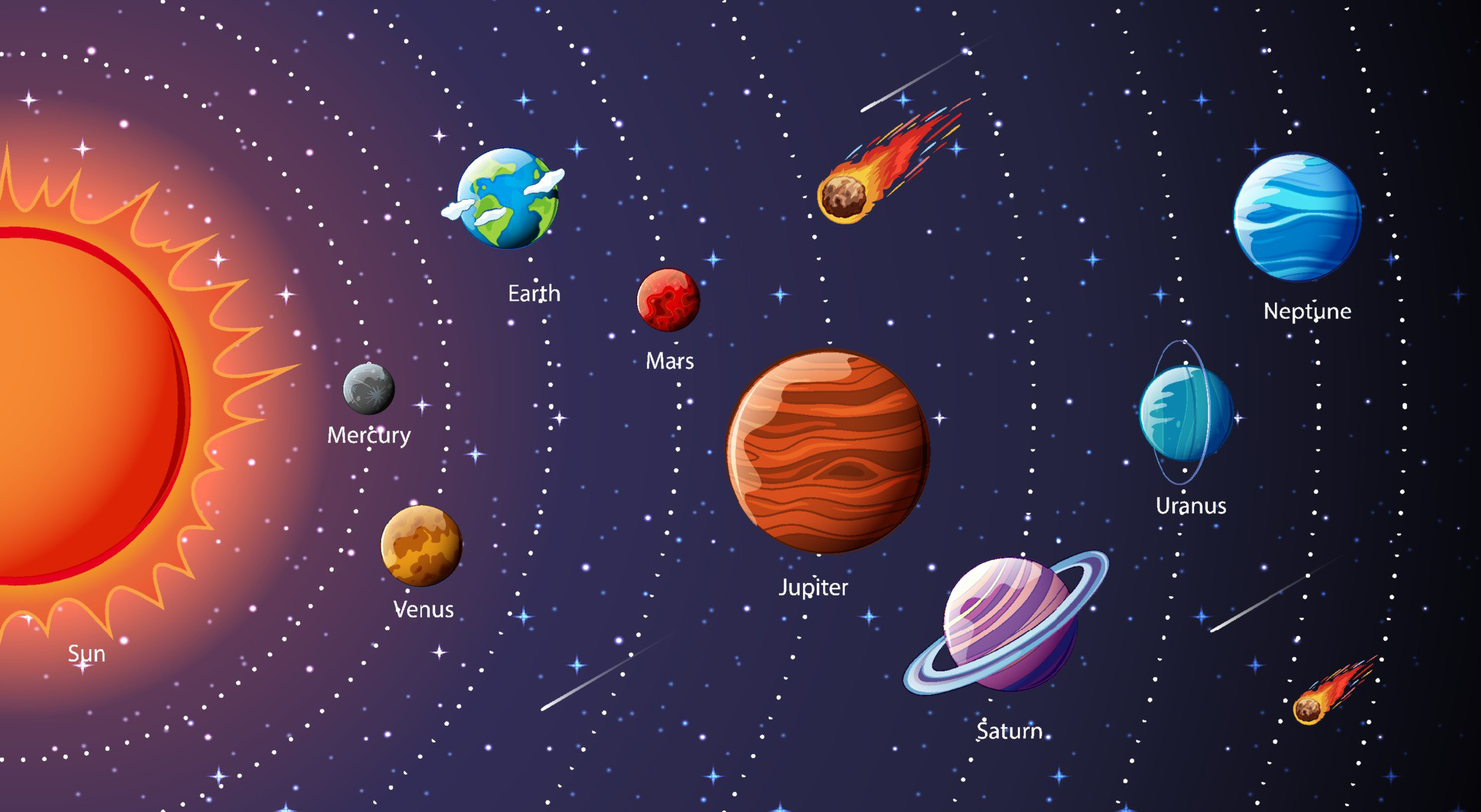The Solar System
Our Solar System is a collection of celestial bodies—including the Sun, eight planets, more than 200 moons, and countless asteroids and comets—all bound together by gravity. The Sun, our local star, makes up over 99% of the Solar System’s mass and provides the energy necessary for life on Earth.

The eight planets—Mercury, Venus, Earth, Mars, Jupiter, Saturn, Uranus, and Neptune—orbit the Sun in nearly circular paths. Each planet is unique: Mercury is the closest to the Sun and has no atmosphere; Venus is shrouded in thick, toxic clouds; Earth teems with life; Mars is a cold desert world; Jupiter and Saturn are gas giants with dozens of moons; Uranus and Neptune are icy giants with mysterious atmospheres.
Between Mars and Jupiter lies the asteroid belt, a region filled with rocky debris. Beyond Neptune, the Kuiper Belt and Oort Cloud harbor dwarf planets like Pluto and trillions of icy bodies. Our Solar System is dynamic, with ongoing discoveries about its origins and evolution.
Jupiter is so massive that it could fit more than 1,300 Earths inside it!
| Planet | Distance from Sun (AU) | Moons |
|---|---|---|
| Mercury | 0.39 | 0 |
| Venus | 0.72 | 0 |
| Earth | 1 | 1 |
| Mars | 1.52 | 2 |
| Jupiter | 5.2 | 95 |
| Saturn | 9.58 | 146 |
| Uranus | 19.2 | 27 |
| Neptune | 30.1 | 14 |